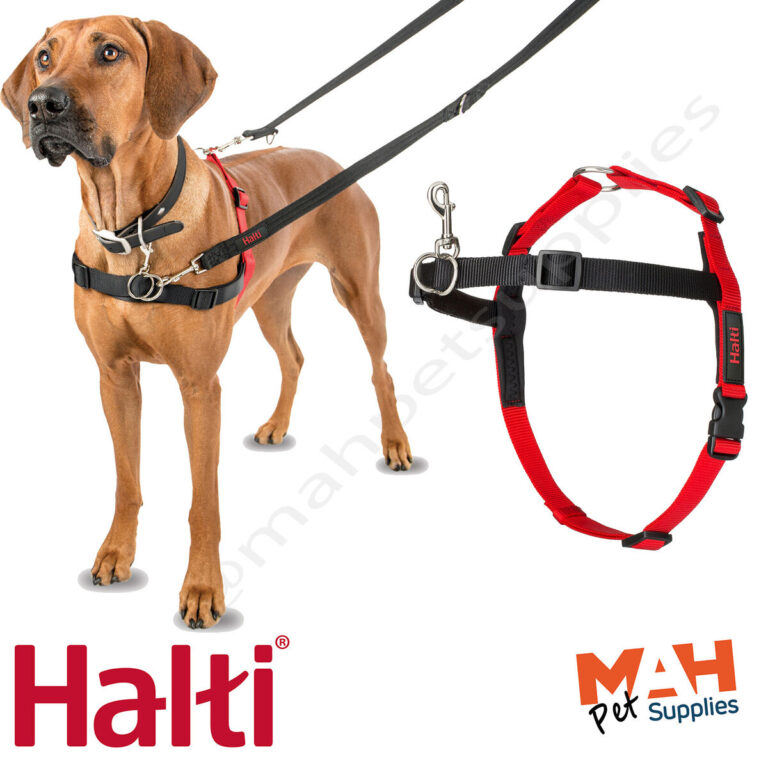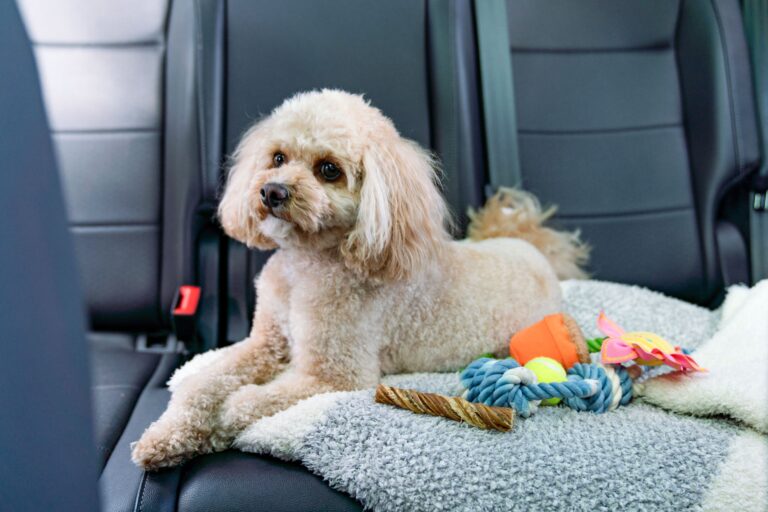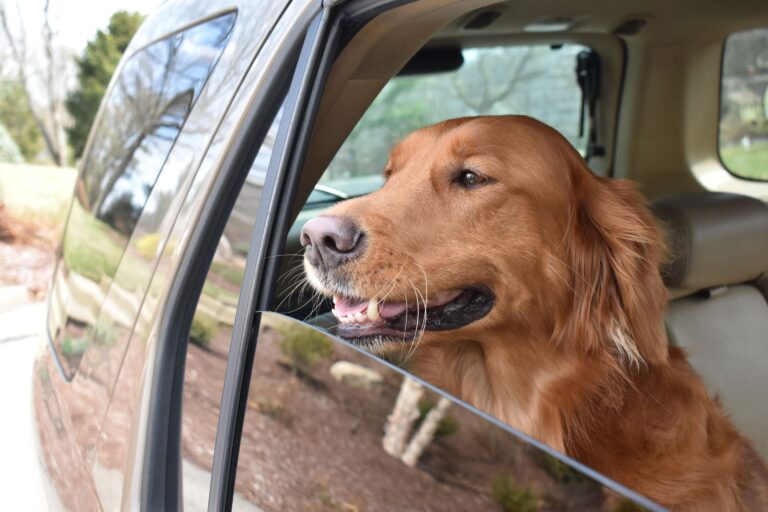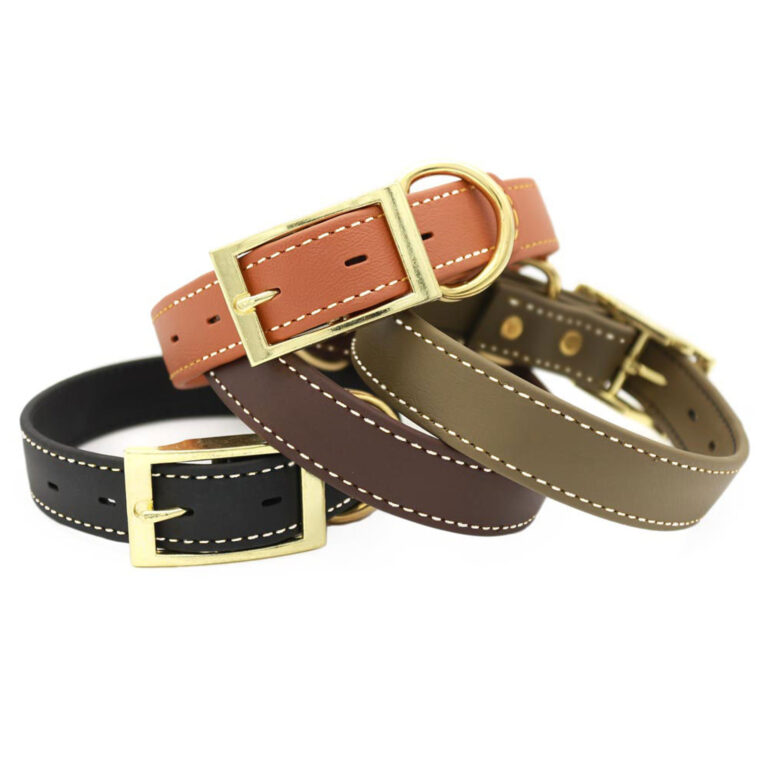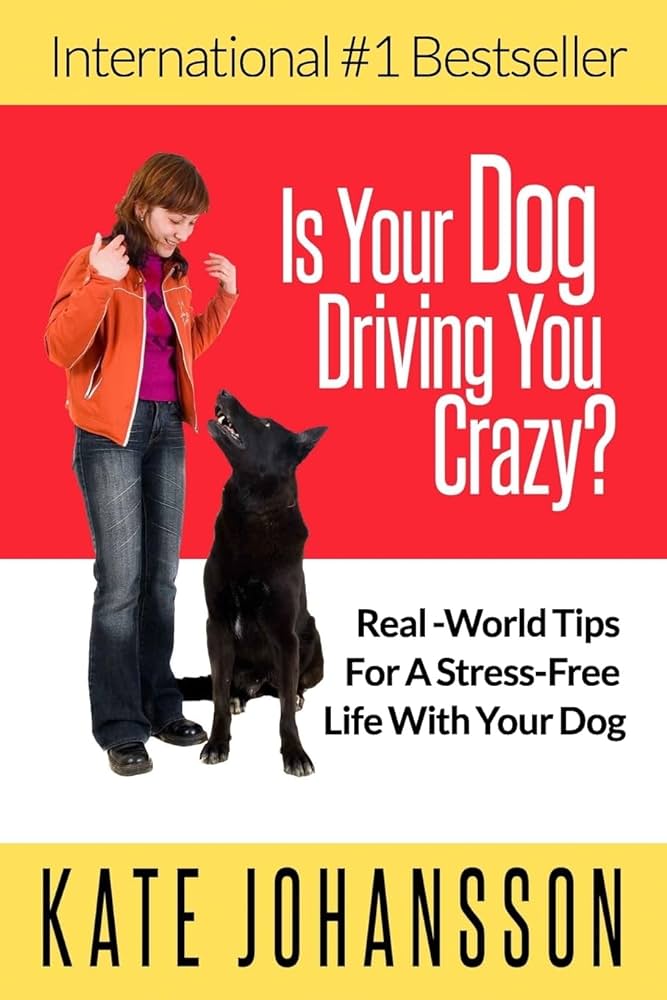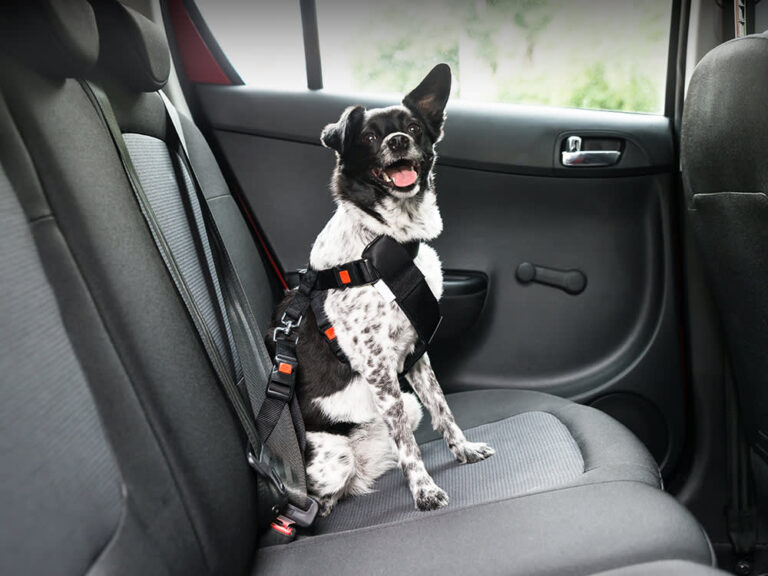Where is the Best Place for a Dog to Ride in a Car?: Safe Spots Unveiled
The best place for a dog to ride in a car is the back seat or cargo area. Ensuring their safety and comfort is essential for a smooth journey.
Placing a dog in the front seat can be dangerous due to airbags deploying. When traveling with a dog, it’s important to use a harness or carrier to secure them properly. This prevents distractions and keeps them safe in case of sudden stops.
Providing a comfortable space with proper ventilation and access to water is key for a stress-free ride. By following these tips, you can make car rides enjoyable for both you and your furry friend.

Credit: www.dogtopia.com
Introduction To Canine Car Safety
When it comes to canine car safety, it’s crucial to consider the best place for a dog to ride in a car. The safest spot for a dog is in the back seat, either with a harness or in a secured crate, to minimize distractions and ensure their safety in case of sudden stops or accidents.
Why Safety Matters
Dogs are beloved members of our families, and their safety should be a top priority when it comes to car travel. Just like humans, dogs can be at risk of injury or even death if they are not properly secured in a vehicle. Ensuring their safety not only protects them but also minimizes distractions for the driver, reducing the chances of accidents. Therefore, understanding the importance of canine car safety is crucial for every dog owner.
Risks Of Improper Seating
Improper seating arrangements for dogs in cars can expose them to various risks and hazards. Let’s take a look at some of the dangers:
- Unrestrained movement: Dogs that are not properly secured can move freely around the car, which can be extremely dangerous. They could be thrown around in case of sudden stops or collisions, potentially injuring themselves or other passengers.
- Airbag injuries: Airbags are designed to protect humans, but they can pose a significant risk to dogs. If a dog is sitting in the front seat and an airbag deploys, it can cause serious injuries, including broken bones or even suffocation.
- Distracted driving: When dogs are not restrained, they may become a distraction to the driver. Dogs roaming freely inside the car can jump onto the driver’s lap, block their view, or interfere with their ability to control the vehicle, leading to accidents.
- Injury from external forces: Dogs that are not secured can also be at risk of injury from external forces. For example, if the car suddenly swerves or gets involved in a collision, the dog could be thrown out of the window or hit by loose objects inside the car.
Considering these risks, it is essential to explore the best places for dogs to ride in a car and invest in proper safety measures to protect our furry friends during travel.
Assessing Your Dog’s Size And Behavior
Assessing Your Dog’s Size and Behavior is crucial when determining the best place for your furry friend to ride in a car. By considering these factors, you can ensure your dog’s safety and comfort during car journeys.
Size Considerations
When assessing your dog’s size for car travel, it’s important to consider the available space in your vehicle. Smaller breeds may be comfortable in a secure crate or travel carrier placed on a rear seat. For medium to large dogs, investing in a pet seat belt or harness can provide the necessary restraint and protection.
Behavioral Assessment
Understanding your dog’s behavior is essential for a stress-free car ride. Anxious or excitable dogs may benefit from a covered crate to create a sense of security, while calmer dogs may be content with a padded bed in the rear cargo area. Additionally, training your dog to remain calm and still during car journeys can enhance safety and comfort for everyone.
Legal Requirements For Dog Transport
Ensure your furry friend’s safety during car journeys by following legal requirements for dog transport. The best place for a dog to ride in a car is in the back seat, secured with a harness or in a well-ventilated crate.
Protect your pup and abide by the rules for a stress-free trip.
When it comes to traveling with your furry friend in a car, safety is the top priority. But did you know that there are also legal requirements for dog transport? In this post, we’ll explore the state-specific laws and consequences of non-compliance when it comes to transporting your dog in a car.State-specific Laws
It’s important to note that laws regarding dog transport vary from state to state. Some states have specific laws regarding the use of restraints, while others may require dogs to be secured in a specific area of the vehicle. In some states, it’s even illegal to transport a dog in the bed of a pickup truck. To ensure compliance with state laws, it’s important to research the laws in your specific state before traveling with your dog. This can prevent any potential legal issues and ensure the safety of both you and your furry friend.Consequences Of Non-compliance
Non-compliance with state-specific laws regarding dog transport can result in serious consequences. This can include fines, legal fees, and even the impoundment of your vehicle. In some cases, non-compliance can even result in criminal charges. Additionally, failing to properly secure your dog during car travel can result in serious injury or even death. It’s important to always follow state laws and use proper restraints to ensure the safety of your furry friend. In conclusion, understanding the legal requirements for dog transport is crucial for both the safety of your pet and compliance with state laws. Always research state-specific laws and use proper restraints to prevent any potential legal issues and ensure the safety of your furry friend during car travel.The Backseat: A Common Choice
The backseat is the best place for a dog to ride in a car, providing safety and comfort. It allows the dog to be securely restrained and reduces distractions for the driver. Additionally, it prevents the dog from interfering with the vehicle’s controls.
Pros And Cons
When it comes to traveling in a car with your furry friend, the backseat is a common choice for many dog owners. This section will explore the pros and cons of this popular option.
Harness And Seatbelt Systems
One way to keep your dog safe and secure in the backseat is by using a harness and seatbelt system. Let’s take a closer look at this method.
Pros:
- Provides restraint: A harness and seatbelt system ensures that your dog stays in place during the car ride, preventing them from roaming around and causing distractions.
- Enhances safety: By securing your dog, you reduce the risk of injury in the event of sudden stops or accidents.
- Easy to use: These systems are designed to be user-friendly, making it simple for you to attach and detach them as needed.
- Offers peace of mind: Knowing that your dog is safely secured allows you to focus on the road and drive with confidence.
Cons:
- May be restrictive: Some dogs may find the harness and seatbelt system uncomfortable or confining, leading to restlessness or anxiety during the car ride.
- Requires training: Introducing your dog to the harness and seatbelt system may require some training and getting them accustomed to wearing it.
- Size limitations: Depending on the size of your dog, finding a suitable harness and seatbelt system that fits properly may be a challenge.
In conclusion, using a harness and seatbelt system in the backseat can be a safe and convenient option for traveling with your dog. However, it is essential to consider your dog’s comfort and ensure the system is properly fitted to maximize effectiveness.
Cargo Area: Space And Safety
When traveling with your dog in a car, the cargo area can offer ample space and enhanced safety features.
Suvs And Vans
SUVs and vans are ideal for dogs as they provide a larger cargo area for movement and comfort.
Barrier Use For Protection
Installing a barrier in the cargo area can prevent your dog from accessing the front seats, ensuring safety for both the pet and the driver.

Credit: happyhound.com
Front Seat: Understanding The Risks
For safe car rides, the best spot for a dog is in the back seat or a secure crate to prevent distractions and ensure their safety. Front seat travel can pose risks due to airbags and potential accidents. Prioritize your furry friend’s well-being by choosing the back seat or a designated pet area.
When it comes to traveling with your furry friend, it’s essential to consider their safety. The front seat may seem like a cozy spot for your dog, but it’s not always the safest option. Let’s explore the risks associated with letting your pooch ride shotgun.Airbag Dangers
Airbags are designed to keep humans safe in the event of an accident, but they can be deadly for dogs. In a collision, the airbag can deploy with such force that it can injure or even kill your furry friend. Small dogs are particularly vulnerable, as they can easily be crushed by the airbag. Therefore, it’s best to avoid letting your dog ride in the front seat, especially if your car has passenger-side airbags.Distraction Considerations
Another risk of letting your dog ride in the front seat is distraction. Dogs can be unpredictable, and their sudden movements or barking can distract the driver and cause an accident. Moreover, dogs in the front seat can easily get entangled in the driver’s legs or arms, which can result in a loss of control of the vehicle. Therefore, it’s always best to secure your dog in the back seat with a harness or a crate. In conclusion, the front seat is not the best place for your furry friend to ride in a car. Airbag dangers and distraction considerations make it a risky spot, so it’s always best to secure your dog in the back seat. By doing so, you’ll ensure your dog’s safety and make your road trips more enjoyable for both you and your furry companion.Specialized Dog Car Seats
When it comes to traveling with your furry friend, safety is a top priority. Specialized dog car seats provide a secure and comfortable way for your pup to travel in the car, ensuring their safety and reducing distractions for the driver. Let’s explore the different types of dog car seats and how to select the right model for your canine companion.
Types Of Dog Car Seats
There are various types of dog car seats available, each designed to cater to different needs and preferences. These include:
- Booster seats: These elevate your dog, allowing them to look out the window and reducing motion sickness.
- Bucket seats: These resemble small dog beds and provide a cozy space for your pup to relax during the journey.
- Bench seat covers: These protect the back seat and provide a comfortable surface for your dog to sit or lie on.
Selecting The Right Model
When selecting a dog car seat, consider the size and weight of your dog, the type of vehicle you have, and your dog’s behavior in the car. Ensure that the seat is easy to install and has appropriate safety features such as harness attachments and sturdy construction. Always choose a model that provides adequate comfort and support for your dog, especially during long rides.
Crates And Carriers: Secure Travel
Dogs are beloved companions, and when it comes to traveling in a car, their safety and comfort are paramount. Crates and carriers provide a secure way for dogs to travel, ensuring peace of mind for pet owners. Let’s explore the benefits of crating, proper crate installation, and why this is the best place for a dog to ride in a car.
Benefits Of Crating
1. Security: Crates provide a secure space, preventing the dog from roaming and causing distractions during the drive.
2. Safety: In the event of sudden stops or accidents, crates protect the dog from injury by acting as a barrier.
3. Comfort: Familiarity with a crate can help reduce anxiety and provide a sense of security for the dog during travel.
Proper Crate Installation
1. Size: Choose a crate that allows the dog to stand, turn around, and lie down comfortably.
2. Secure Placement: Place the crate in the car’s rear seat or cargo area and secure it with seat belts or straps to prevent movement.
3. Ventilation: Ensure the crate has adequate airflow to keep the dog comfortable during the journey.
Traveling Tips For Dog Owners
For dog owners traveling by car, the best place for a dog to ride is in the back seat secured with a pet seat belt or in a crate to ensure safety. Avoid letting your dog ride in the front seat to prevent distractions while driving.
Pre-travel Preparation
Before embarking on a car journey with your furry friend, it’s essential to prepare them for the ride. A well-trained dog is easier to manage on a long trip, so start by getting them accustomed to being in a car. Gradually increase the duration and frequency of car rides to help them feel comfortable. Ensure your dog is up-to-date with their vaccinations and has a collar with an ID tag. Pack a travel bag for your dog, including food, water, bowls, toys, and a leash. Place a blanket or towel in the car for your dog to lie on and protect your car’s interior.During The Journey
Where is the best place for a dog to ride in a car? The back seat is the safest option for your dog. It’s essential to secure your dog in a crate, harness, or seat belt to prevent them from roaming around the car. Unrestrained dogs can be a distraction to the driver and pose a risk to passengers in the event of an accident. It’s crucial to take regular breaks to allow your dog to stretch their legs, use the bathroom, and have a drink of water. Never leave your dog alone in the car, especially on a hot day. Even with the windows cracked, the temperature inside a car can quickly become dangerously hot. In conclusion, traveling with a dog requires careful planning and preparation. By following these traveling tips for dog owners, you can ensure a safe and comfortable journey for both you and your furry friend.Emergency Measures And First Aid
Prepare an emergency kit for your dog in the car, including first aid supplies, water, and food.
Learn basic first aid techniques for dogs, such as bandaging wounds and performing CPR.
Case Studies: Best Practices
For the best place for a dog to ride in a car, the back seat with a harness is safest. This ensures the dog’s safety and prevents distractions while driving. Remember, always prioritize securing your furry friend during car rides for everyone’s well-being.
Real-life Success Stories
In this section, we will explore real-life success stories of dogs riding in cars, highlighting best practices and the positive outcomes they have achieved. These case studies provide valuable insights and practical examples that can help dog owners ensure the best place for their furry friends to ride in a car.
| Background | Best Practice | Outcome |
|---|---|---|
| A dog named Max used to ride in the front seat, causing distractions for the driver. | Max’s owner decided to secure him in the backseat using a dog harness and seat belt attachment. | Max now enjoys a safe and comfortable ride, reducing distractions and potential accidents. |
| Background | Best Practice | Outcome |
|---|---|---|
| A dog named Bella used to roam freely in the car, risking injury during sudden stops. | Bella’s owner introduced a dog crate in the backseat, providing a secure and confined space for her. | Bella now rides comfortably in her crate, ensuring her safety and minimizing the chances of accidents. |
Lessons Learned From Accidents
Learning from accidents can be a valuable way to improve the safety of your dog during car rides. These lessons learned highlight the importance of taking precautions and making informed decisions.
- Lesson 1: Unrestrained dogs can become projectiles during accidents, causing harm to themselves and others.
- Lesson 2: Placing a dog in the front seat increases the risk of injuries from airbags in the event of a collision.
- Lesson 3: Allowing a dog to stick their head out of the window puts them at risk of eye and ear injuries from debris.
- Lesson 4: Dogs should never be left unattended in a parked car, as they can suffer from heatstroke or theft.
By learning from these accidents, we can make better choices and create a safer environment for our beloved pets during car rides.
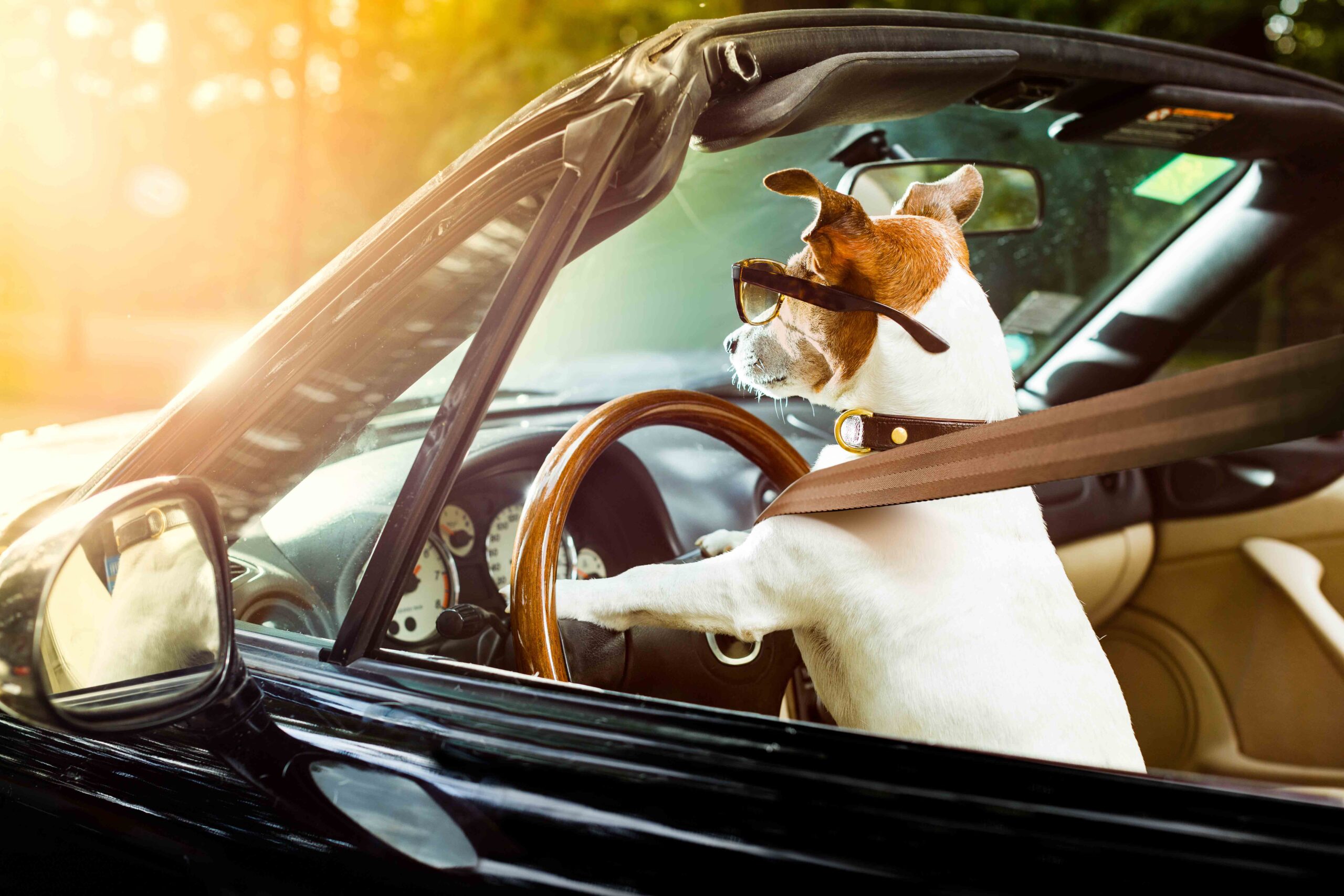
Credit: www.mymarylandauto.com
Conclusion: Prioritizing Your Dog’s Safety
Ensure your dog’s safety by securing them in the back seat using a harness, crate, or a pet car seat. Avoid letting your dog ride in the front seat to prevent distractions and injuries in case of sudden stops or accidents.
Prioritize your furry friend’s well-being during car rides.
Final Thoughts
In conclusion, ensuring your dog’s safety during car rides should be a top priority. It is crucial to choose the best spot for your furry friend to ride in the car, whether that be in the back seat, a crate, or a harness. Additionally, it is important to properly secure your dog to prevent injury in the event of an accident.Encouraging Responsible Dog Transport
As responsible pet owners, it is our duty to ensure our dogs are safe during car rides. This includes selecting the appropriate travel method and securing our furry friends properly. It is also important to never leave our dogs unattended in a parked car, as temperatures can rise quickly and put them at risk of heatstroke or other health issues. To encourage responsible dog transport, we can also spread awareness and educate fellow pet owners on the best practices for keeping our dogs safe in the car. This includes sharing information on proper restraint methods, choosing the best spot for our dogs to ride, and never leaving them unattended. Overall, prioritizing our dog’s safety during car rides is essential. By taking the necessary precautions and following best practices, we can ensure our furry friends stay safe and comfortable during car rides.Frequently Asked Questions
Where Should Your Dog Ride In The Car?
Your dog should ride in the back seat or in a secured crate in the car for safety. Avoid letting your dog ride in the front seat or on your lap while driving. This helps prevent distractions and keeps your dog safe in case of sudden stops.
Where Do Dogs Have To Sit In The Car?
Dogs should sit in the back seat of the car, preferably secured with a harness or in a crate. This ensures their safety and prevents distractions for the driver.
What Is The Safest Seat For A Dog In A Car?
The safest seat for a dog in a car is the back seat. Use a harness, crate, or seat belt to secure your dog. Avoid the front seat and never let your dog ride in your lap while driving.
Should Dogs Sit In The Front Or Back Of A Car?
Dogs should sit in the back seat of the car, secured with a harness or placed in a crate. This prevents them from being injured in case of an accident and avoids distraction to the driver. Never let dogs sit in the front seat as airbags can be dangerous for them.
Conclusion
Ultimately, ensuring your dog’s safety and comfort in the car is crucial. Whether using a secured crate, harness, or car seat, prioritize their well-being. Consider your dog’s size, temperament, and preferences to choose the best option. By selecting the most suitable riding arrangement, you can make car trips enjoyable for both you and your furry companion.
- Can I Get in a Taxi Without a Car Seat? - January 26, 2025
- Can I Get Chlamydia From a Toilet Seat? - January 26, 2025
- Can I Get an Uber With a Car Seat? - January 26, 2025

